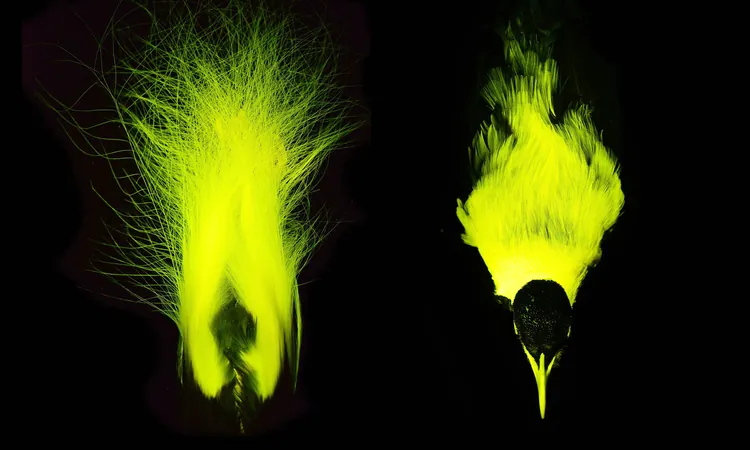
Astonishing Discovery: Birds of Paradise Glow in Colors Invisible to Humans to Attract Mates!
2025-03-27
Author: Yan
Astonishing Discovery
Animals are known for their vibrant colors, but recent research has unveiled a mind-blowing phenomenon: certain species of birds, specifically birds-of-paradise, are using biofluorescence to charm potential mates. This captivating process allows their feathers to absorb UV light and re-emit it as visible colors—primarily in shades of green and yellow—that remain unseen by the human eye.
Study Overview
A groundbreaking study evaluated all 45 species of birds-of-paradise, famous for their elaborate feather displays and intricate courtship dances. Remarkably, 37 of these species exhibited signs of biofluorescence in various parts of their bodies. Males typically flaunt their glow via their beaks, the insides of their mouths, and select feather patches, while females display fluorescence primarily on their chests and bellies.
The Science Behind the Sparkle
Conducted by the American Museum of Natural History (AMNH) and the University of Nebraska-Lincoln, the research illustrates how wildlife can communicate not just through visible traits but through signals that may be completely invisible to human observers. “The unique mating rituals and displays of birds-of-paradise have always fascinated scientists,” said Rene Martin, the study's lead author. “The fact that they may be signaling to each other in even more vibrant ways is truly exciting.”
Ecological Significance
Birds-of-paradise are primarily found in eastern Australia, Indonesia, and New Guinea, thriving in environments where light conditions are ideal for showcasing their glimmering plumage. The dense canopies of these forests create diverse light environments, which likely enhance the effectiveness of biofluorescence during crucial mating displays.
Implications for Understanding Avian Behavior
The discovery of widespread biofluorescence in birds-of-paradise raises important questions about the intricate signaling systems of birds and their evolutionary adaptations. While birds-of-paradise have already intrigued scientists with their colorful plumage and behaviors, this emerging understanding of their "secret language of light" prompts further investigation into how environmental factors impact their luminous displays.
Future Research
Future research aims to explore how habitat degradation and seasonal light variations affect these dazzling displays. With advancements in imaging technologies, scientists may soon uncover similarly hidden fluorescence in other bird families known for their striking appearances.
Conclusion
This remarkable study reshapes our understanding of avian communication and unveils the potential significance of fluorescent signals across a multitude of bird species. The findings were published in the journal *Royal Society Open Science*, paving the way for further exploration into the dazzling world of biofluorescent birds.

 Brasil (PT)
Brasil (PT)
 Canada (EN)
Canada (EN)
 Chile (ES)
Chile (ES)
 Česko (CS)
Česko (CS)
 대한민국 (KO)
대한민국 (KO)
 España (ES)
España (ES)
 France (FR)
France (FR)
 Hong Kong (EN)
Hong Kong (EN)
 Italia (IT)
Italia (IT)
 日本 (JA)
日本 (JA)
 Magyarország (HU)
Magyarország (HU)
 Norge (NO)
Norge (NO)
 Polska (PL)
Polska (PL)
 Schweiz (DE)
Schweiz (DE)
 Singapore (EN)
Singapore (EN)
 Sverige (SV)
Sverige (SV)
 Suomi (FI)
Suomi (FI)
 Türkiye (TR)
Türkiye (TR)
 الإمارات العربية المتحدة (AR)
الإمارات العربية المتحدة (AR)